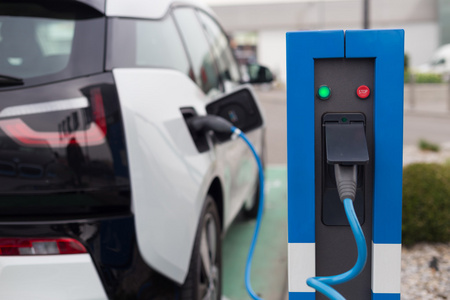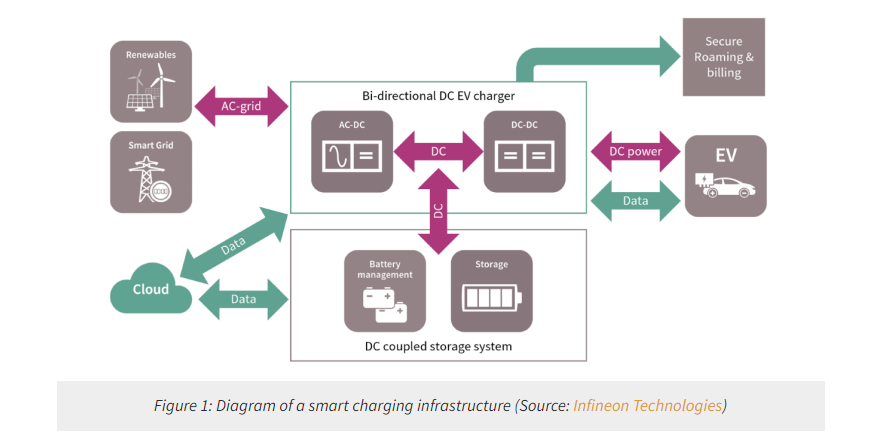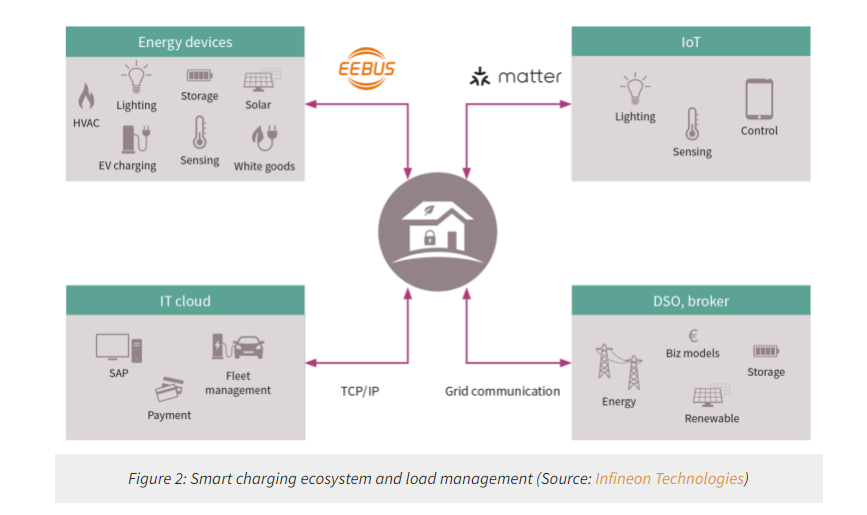
The growing use of electric vehicles has posed challenges for the electricity grid as it needs to meet the increased demand. This surge in electric vehicle adoption has brought about significant issues for power networks, such as higher power consumption, increased short-circuit currents, and the possibility of voltage fluctuations.
While wind and solar energy are sustainable sources of renewable energy, their production is unpredictable due to varying weather conditions and time fluctuations. To address this, temporary energy storage has become essential to balance supply and demand. With their substantial battery capacity, electric vehicles and plug-in hybrid electric vehicles can serve as distributed energy storage systems.
However, standardized and secure systems are crucial to effectively transfer energy between the grid and vehicles in both directions (grid-to-vehicle and vehicle-to-grid). This necessitates a bidirectional exchange of information using a smart energy management system and a standardized protocol. The absence of regulations and standards hampers the transition of the traditional grid to a smart and environmentally friendly power grid.
There is a clear need for intelligent charging infrastructure capable of addressing the strain on the electricity grid caused by the proliferation of electric vehicles. This article outlines how a smart charging infrastructure can contribute to solving these challenges and supporting the electricity grid.
Is bidirectional charging technology the future?
Smart charging infrastructure includes a range of techniques to enhance the charging experience’s efficiency and advantages for electric grid stability and electric vehicle owners alike. This approach needs to make informed choices regarding the timing and method of charging to optimize outcomes.
One aspect of this infrastructure is around the optimization of charging timing. This includes scheduling the vehicle’s charging sessions to coincide with periods of minimal electrical grid demand, effectively reducing the burden on the electrical grid during peak hours. However, it’s important to recognize that the benefits of smart charging infrastructure extend beyond reducing peak demand on the grid.

Stakeholders should explore a significant opportunity involving energy storage capabilities, typically in the form of batteries, which can play a key role in enhancing the overall stability of the electrical grid. Electric vehicles offer a valuable means of improving grid stability through bidirectional load management.
In simple words, this means that during fluctuating demand or supply on the grid, electric vehicles can either feed surplus energy into the grid or absorb excess energy as required, contributing to maintaining a consistent and reliable electricity supply.
Another approach through which electric vehicles can contribute to grid stability is by adjusting their charging or discharging rates to compensate for voltage and frequency fluctuations within the grid. This adjustment is crucial for ensuring that the electricity supplied to residences and businesses remains safely within stable limits.
Earlier this year, Tesla announced its intention to enable bidirectional charging for all its electric vehicles by 2025. This development was confirmed by Drew Baglino, senior VP of Powertrain and Energy Engineering, during Tesla’s Investor Day event. The bidirectional charging technology includes electric vehicles that not only receive power but also feed it back to various destinations, including homes (V2H), businesses (V2B), and the grid (V2G).
Bidirectional charging infrastructure demands security
The bidirectional charging framework extends beyond the technological backing provided by electric vehicle manufacturers. Substantial investments are needed in infrastructure and cybersecurity to ensure the efficient operation of these systems, with contributions not only from distribution system operators but also from transmission system operators.
To achieve a high level of efficiency in energy transfer, progress must occur in two primary domains: establishing a reliable two-way communication infrastructure and security for network and communication systems. A resilient communication infrastructure is essential to facilitate effective communication among electric vehicles, charging stations, utilities, and various stakeholders. Simultaneously, cybersecurity measures must be prioritized to safeguard personal information and billing data.

There are three different protocols in the context of smart charging infrastructure and energy management. First, there’s the OpenADR (Open Auto Demand Response) standard, which is designed to streamline data exchange on the grid level. This standard facilitates communication among various entities, including charging stations, energy providers, and distribution system operators.
Next is the EEBUS standard, primarily used for managing energy consumption within buildings. It aims to oversee energy usage and interactions with energy providers, enhancing overall energy management efficiency. Lastly, there is the Matter protocol, designed with the specific goal of interfacing with IoT sensors and control entities. Its mission is to promote interoperability and seamless communication among various smart devices.
Infineon product portfolio supports smart charging infrastructure
Infineon Technologies has been actively involved in developing semiconductor solutions to play a significant role in the ever-evolving electric vehicle ecosystem. The company offers a comprehensive and secure ecosystem that includes various aspects of electric vehicle charging infrastructure.
For instance, in the power stage, Infineon provides advanced technologies such as CoolSiC MOSFETs, CoolGaN transistors, and other gate driver ICs, all aimed at enhancing the efficiency of electric vehicle charging systems. This not only reduces power losses but also facilitates modular design.
On the system control front, Infineon offers the AURIX family of 32-bit TriCore architecture processors equipped with embedded hardware security module capabilities. In addition to this, the Infineon OPTIGA family of tamper-resistant security devices uses cryptography to improve the security of smart charging infrastructure. These devices can find utility in communication gateways or contribute to edge computing within charging stations.
Conclusion
Stakeholders within the electric vehicle charging network need to adopt intelligent strategies aimed at enhancing energy efficiency and reducing the burden on the electrical grid. A comprehensive investment effort is required across the spectrum to turn bidirectional charging technology into a practical and viable solution.
About US
Heisener Electronic is a famous international One Stop Purchasing Service Provider of Electronic Components. Based on the concept of Customer-orientation and Innovation, a good process control system, professional management team, advanced inventory management technology, we can provide one-stop electronic component supporting services that Heisener is the preferred partner for all the enterprises and research institutions.
